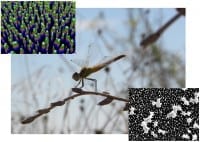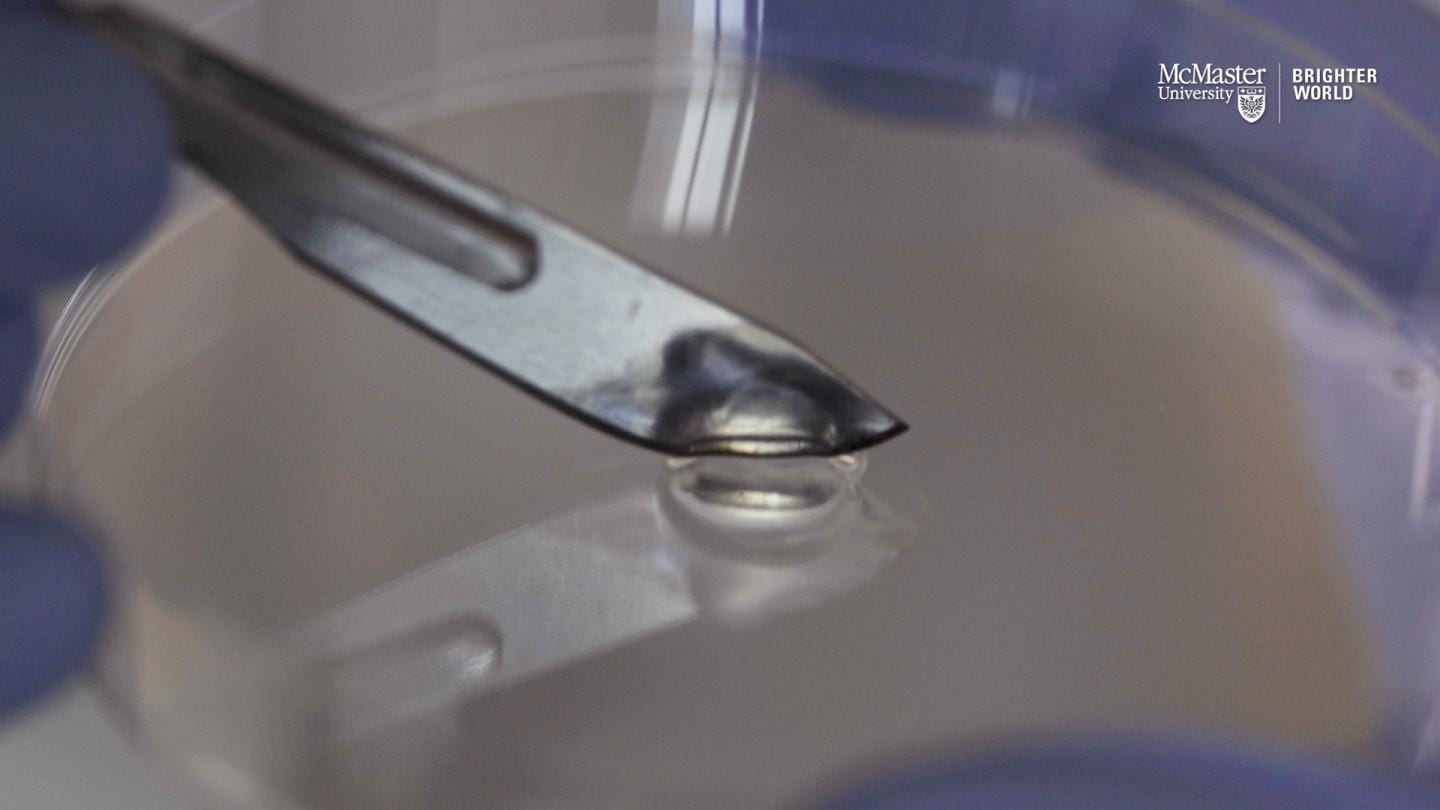
Learning from nature, researchers at Swinburne University of Technology have revealed the bacterial killing potential of black silicon, leading the way for the development of a new generation of nanostructured antibacterial materials.
Black silicon is silicon that has been etched to create long narrow nanoprotrusions on its surface. Surfaces with similar features are common in the natural world.
Earlier this year researchers, led by microbiologist Professor Elena Ivanova and Dean of the Faculty of Life and Social Sciences, Professor Russell Crawford, discovered that the wing of the cicada Psaltoda claripennis can shred certain types of rod-shaped bacteria through a process that arises from its physical structure.
“Based on this discovery, we investigated other insects that may possess similar surface architectures that might kill more bacteria, in particular the deadly strains of the Staphylococcus aureus or golden staph bacterium,” Professor Ivanova said.
Their search led them to the wings of the Diplacodes bipunctata or Wandering Percher dragonfly, whose spike-like nanostructure kills both rod-shaped and spherical bacteria.
Working with Swinburne Professor of Nanophotonics Saulius Juodkazis, the team set out to mimic the surface structure of the dragonfly wing on the silicon surface.
In research published today in Nature Communications, the researchers compare the two surfaces and their bacteria-killing capacity.
They demonstrate that both create a spike-like structure through the formation of clusters of multiple neighbouring nanoprotrusions.
“This structure generates a mechanical bacteria killing effect which is unrelated to the chemical composition of the surface,” Professor Crawford said.
“Both surfaces were found to be highly effective against a range of bacteria, as well as endospores. They exhibited estimated average bacteria killing rates of up to 450,000 cells per minute of exposure, for every square centimetre of available surface.
“This represents an exciting prospect for the development of a new generation of antibacterial nanomaterials that could be applied to the surfaces of medical implants, making them far safer,” he said.
The Latest Google Headlines on:
Black silicon
[google_news title=”” keyword=”Black silicon” num_posts=”10″ blurb_length=”0″ show_thumb=”left”]
The Latest Bing News on:
Black silicon
- Black entrepreneurs, frustrated by high rates, look to the electionon April 30, 2024 at 4:24 pm
Despite indications of economic vigor, anxiety over higher borrowing costs could prove pivotal in the 2024 presidential election — especially in Georgia.
- Black Kite Research Reveals Growing Persistence, Sophistication and Aggression Within Cybercrime Ecosystemon April 30, 2024 at 6:42 am
Black Kite, the leader in third-party cyber risk intelligence, today published its annual report, based on primary research, State of Ransomware 2024: A Year of Surges and Shuffling, which reveals the ...
- From Wall Street to Silicon Valley, AI specialists are a hot commodityon April 29, 2024 at 6:52 am
The AI-fueled stock market bubble has a few years left. Research firm Capital Economics said 2026 is when things will come crashing down for AI. It has a glum prediction for the markets, anticipating ...
- RFK Jr.’s running mate, Nicole Shanahan, is keeping his campaign in the blackon April 18, 2024 at 2:50 pm
Robert F. Kennedy Jr.'s wealthy but relatively obscure running mate, Nicole Shanahan, contributed $2 million to their long shot White House bid in March, preventing the campaign from running into the ...
- The Homepage of the Black Interneton April 12, 2024 at 4:00 am
He was like, ‘Wait, you all met on Black Planet? Like, there’s a planet that’s full of Black people? Why did you leave?!’ ” Williams had to explain that they’d actually been right here on “regular ...
The Latest Google Headlines on:
Nanostructured antibacterial materials
[google_news title=”” keyword=”nanostructured antibacterial materials” num_posts=”10″ blurb_length=”0″ show_thumb=”left”]
The Latest Bing News on:
Nanostructured antibacterial materials
- New nanocomposite from papaya peel waste exhibits promising photocatalytic and antibacterial activityon April 23, 2024 at 11:44 am
In a significant leap towards sustainable environmental management and antimicrobial strategies, a team of international researchers has successfully synthesized a fluorescent carbon dot (CD) and ...










